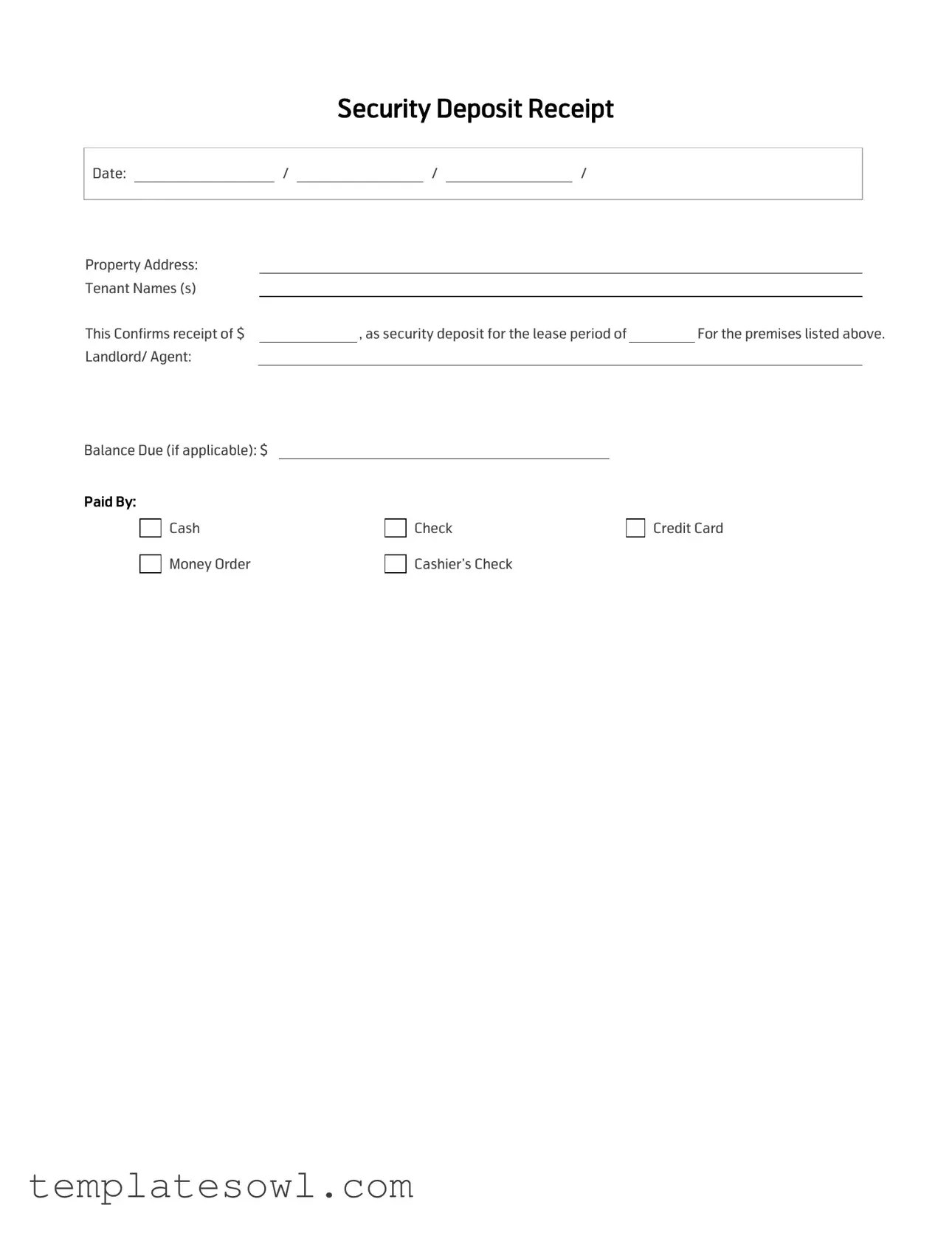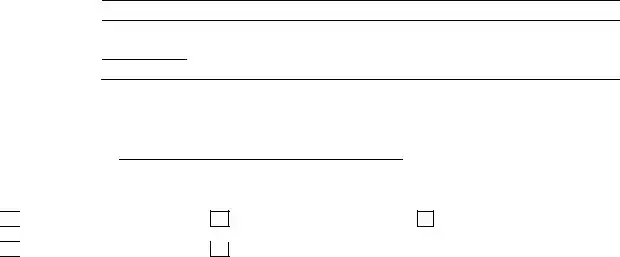What is a Receipt Security Deposit form?
A Receipt Security Deposit form is a document that acknowledges the receipt of a security deposit from a tenant to a landlord or property manager. This form typically includes details such as the date the deposit was received, the property address, the names of the tenants involved, and the amount of the deposit. It serves as proof for both parties that the landlord has received the security deposit, which is usually held to cover potential damages or unpaid rent during the lease period.
What information do I need to provide on the form?
To complete the Receipt Security Deposit form, you will need to provide several key pieces of information. This includes the date the deposit is received, the property address, and the names of the tenants who will be renting the property. You'll also need to specify the amount of the security deposit and check the payment method used—cash, money order, check, credit card, or cashier’s check. If there is a balance due, that amount should also be recorded.
Why is it important to have a Receipt Security Deposit form?
Having a Receipt Security Deposit form is crucial for both tenants and landlords. For tenants, it provides documented proof that they paid a security deposit, which may be needed when disputing charges at the end of a lease. For landlords, it serves as a record that can be referred back to if there are any questions or issues concerning the security deposit throughout the lease period. This documentation can help prevent misunderstandings and protect both parties in case of legal disputes.
Can I use a digital version of the Receipt Security Deposit form?
Yes, a digital version of the Receipt Security Deposit form is perfectly acceptable, as long as it includes all the necessary information. Many landlords and property managers now utilize electronic documents for efficiency. Just ensure that both the tenant and the landlord or agent receive copies of the completed form, either digitally or in printed format, to maintain a clear record of the transaction.
What should I do if there is a dispute over the security deposit?
If a dispute arises concerning the security deposit, the Receipt Security Deposit form can serve as a vital piece of evidence. Both parties should refer to the document for clarity on what was agreed upon. Communication between the tenant and landlord is key. If no resolution can be found, consider seeking help from a mediator or reviewing local tenant-landlord laws, as well as possibly involving legal professionals if necessary.



 Cash
Cash
 Money Order
Money Order